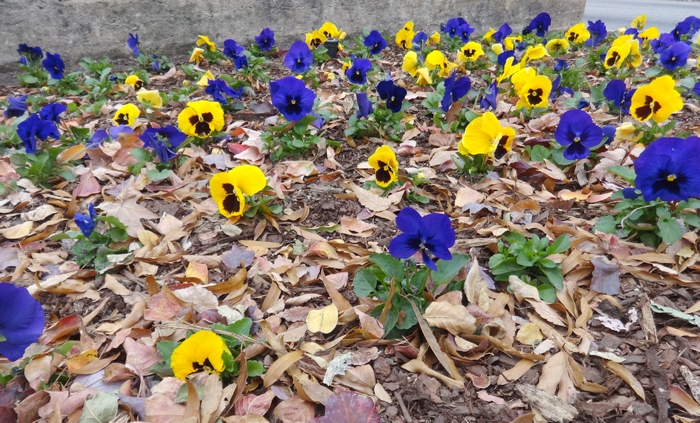Darrell Blackwelder: Now is not the time to prune
Published 12:00 am Friday, November 14, 2014

- COOPERATIVE EXTENSION Now is the time to plant pansies to brighten up the landscape.
By Darrell Blackwelder
Cooperative Extension
Outdoor activities and chores never seem to cease, even with the cold blast of winter.
Many believe that fall is the best time to prune. Actually, pruning can be done at any time of the year, but heavy pruning in the fall may cause damage later in the winter. Heavy duty pruning should be initiated in the spring in mid-March to avoid cold damage. Heavy pruning now may stimulate growth in some plants and with the possibility of unseasonably warm temperatures in late winter. New growth can easily be killed by late frosts or freezes. Fruit trees and grape vines should be pruned as late as possible to avoid early bloom kill in late winter or early spring.
Spring blooming plants such as azaleas, weigela, forsythia and camellia japonica should be pruned after bloom in the spring, including Encore azaleas. Bud set is initiated in most spring-blooming plant materials in late summer and early fall. Pruning now would remove much of the flowers for spring. This holds true for other spring flowering trees such as dogwood, flowering cherry or redbud.
Trees and shrubs can be lightly pruned now. Excessive summer growth or an occasional limb that hampers mowing can be removed without major damage to the plant.
It’s important to remove leaves from newly seeded lawns. Rain and windy conditions produce layers of wet leaves, deterring growth and development on newly seeded areas of the lawn. Those with newly seeded lawns need to carefully rake away or blow leaves so emerging seed and established lawns can grow and expand root systems.
Newly planted fescue lawns should be mowed when the young turf reaches a height of 3 or 4 inches. Make sure the mower blade is very sharp. Dull mower blades will rip young seedlings out of the ground. Continue to fertilize lawns into late November. Continuous fertilization allows fescue to develop a strong root system necessary for next summer’s survival.
Pansies can still be planted, but make sure that the plant beds are deeply tilled with ample soil amendments. Mulch newly set plants with a 3-inch layer of fine bark. Dead heading spent blooms throughout the fall and winter promotes maximum root growth. Fertilize with a water soluble fertilizer when temperatures fall below 60 degrees. Fertilization during unseasonably warm temperatures in the winter months causes the plants to stretch and become weak.
Vegetable gardens and other gardening areas should have a cover crop planted to reduce erosion and weed control. Now is the time to plant rye grain, crimson clover, Austrian winter peas, vetch or annual ryegrass. Winter cover crops add organic matter, increasing the workability and fertility of the soil.
Darrell Blackwelder is an agricultural agent in charge of horticulture with the North Carolina Cooperative Extension Service in Rowan County. 704-216-8970.




